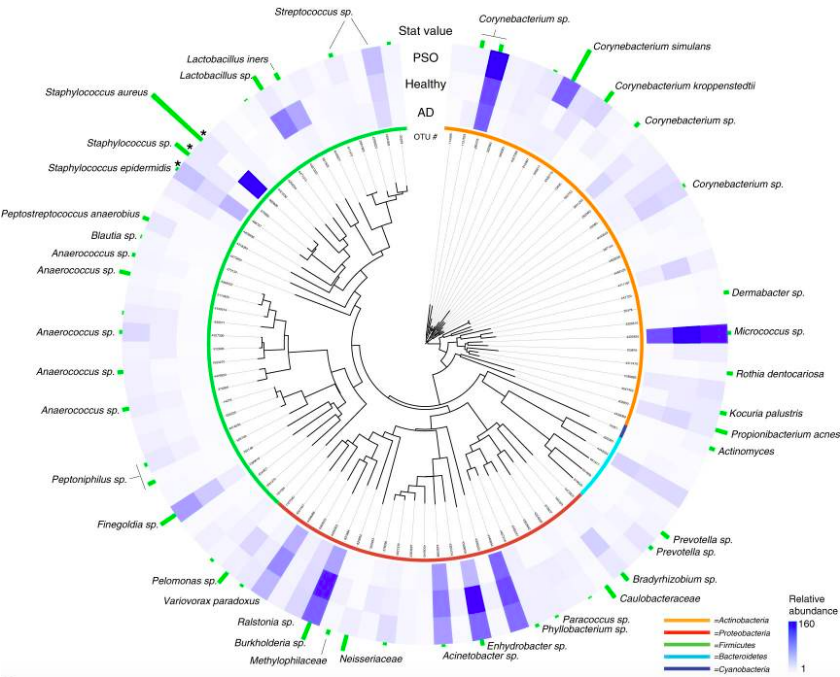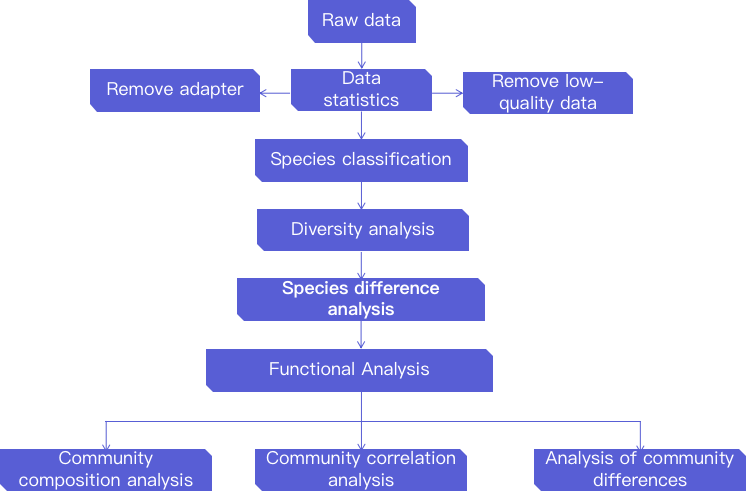Bioinformatics Analysis for Dermatology
Introduction
The skin is the largest organ of the human body, and dermatosis is a general term for diseases that occur in the skin and skin accessory organs. There are many types of skin diseases, and there are many causes of skin diseases. Some skin diseases are caused by infectious factors, such as leprosy, scabies, fungal diseases, and bacterial skin infections. There are other internal and external factors that cause skin diseases, such as mechanical, physical, chemical, biological, endocrine, immune, etc., such as diseases that occur in various internal organs can also be manifested on the skin. Common skin diseases include dandruff, atopic dermatitis and psoriasis. The skin is an ecosystem composed of various microorganisms, tissues, cells, and various secretions on the surface of the skin. Once the balance between the microbial community and the skin surface tissue is broken, it may cause skin diseases or infections.
Application of Bioinformatics in the Research of Dermatology
With the development of biotechnology, the research methods of pathogenic microorganisms mainly include classical culture identification method, real-time fluorescent quantitative PCR method, NGS analysis, and mass spectrometry. Using bioinformatics methods, the data generated by next-generation sequencing technologies (such as Roche 454, Illimina MiSeq, Ion Torrent PGM) and mass spectrometry are used to conduct skin microbial diversity analysis, in order to further understand skin health, diseases and infections, etc. The structural characteristics of the microbial community and its relationship with skin tissues and the environment provide a data basis for the follow-up realization of accurate diagnosis, detection, treatment and prevention of infectious diseases.
 Fig 1. Characterization of the skin microbiome in atopic dermatitis and psoriasis. The figure shows an evolutionary tree based on 16S rRNA gene sequences, abundance and statistical significance of the 95 most abundant OTUs. (Nanna F, et al. 2019)
Fig 1. Characterization of the skin microbiome in atopic dermatitis and psoriasis. The figure shows an evolutionary tree based on 16S rRNA gene sequences, abundance and statistical significance of the 95 most abundant OTUs. (Nanna F, et al. 2019)
How We Can Help Your Dermatology Research
By combining our expertise in bioinformatics analysis with our extensive knowledge in the field of dermatology, from preclinical to clinical, we can support your disease research at every stage. Our bioinformatics service can help you with:
- Metagenomic analysis: Identification and analysis of pathogens such as bacteria, fungi, viruses, etc., to lay a data foundation for pathogenic microorganism detection, and to explore the pathogenic mechanism of pathogens.
- Biomarker and target discovery: Identify disease markers and biomarkers used to measure drug efficacy and mechanism of action.
- Genotyping analysis: SNP genotype analysis and DNA sequence analysis are used to detect new SNPs related to disease or drug response.
- Genome-wide association analysis: Mining genetic factors related to the occurrence of skin diseases.
- Meta-analysis: by integrating phenotypes and environmental or genetic factors, mining factors related to the occurrence of skin diseases.
In addition, our customized solutions utilize the most advanced methods and are tailored to the data types and needs of each project.
An Example of a Data Analysis Process
CD Genomics provides a one-stop bioinformatics data analysis service, and customers only need to provide raw data. The flowchart below shows the general process of microbial data analysis.

Service Process

Biomedical-Bioinformatics, as a division of CD Genomics, provides established, cost-efficient, and rapid turnaround dermatology data analysis services for biomedical researchers or doctors. For dermatology-related research, CD Genomics not only provides bioinformatics data analysis services, but can also help researchers formulate appropriate technical routes and provide related technical services according to the research purposes of the researchers, such as from experiments, sequencing to data analysis or data downloading and reporting. If you have any questions about the data analysis cycle, analysis content and price, please click online inquiry.
What's More
As one of the experienced biological information analysis service providers, CD Genomic provides researchers with high-quality personalized data analysis and chart production services. For more detailed information, such as sequencing, data downloaded, or data analysis services and others chart production services, please feel free to contact us. We look forward to working with you!
References
- Nanna F, et al. Microbe-host interplay in atopic dermatitis and psoriasis[J]. Nat Commun. 2019; 10: 4703.
- Clausen ML, et al. Association of Disease Severity With Skin Microbiome and Filaggrin Gene Mutations in Adult Atopic Dermatitis[J]. JAMA Dermatol. 2018 Mar 1;154(3):293-300.
* For research use only. Not for use in clinical diagnosis or treatment of humans or animals.
Online Inquiry
Please submit a detailed description of your project. Our industry-leading scientists will review the information provided as soon as possible. You can also send emails directly to for inquiries.
